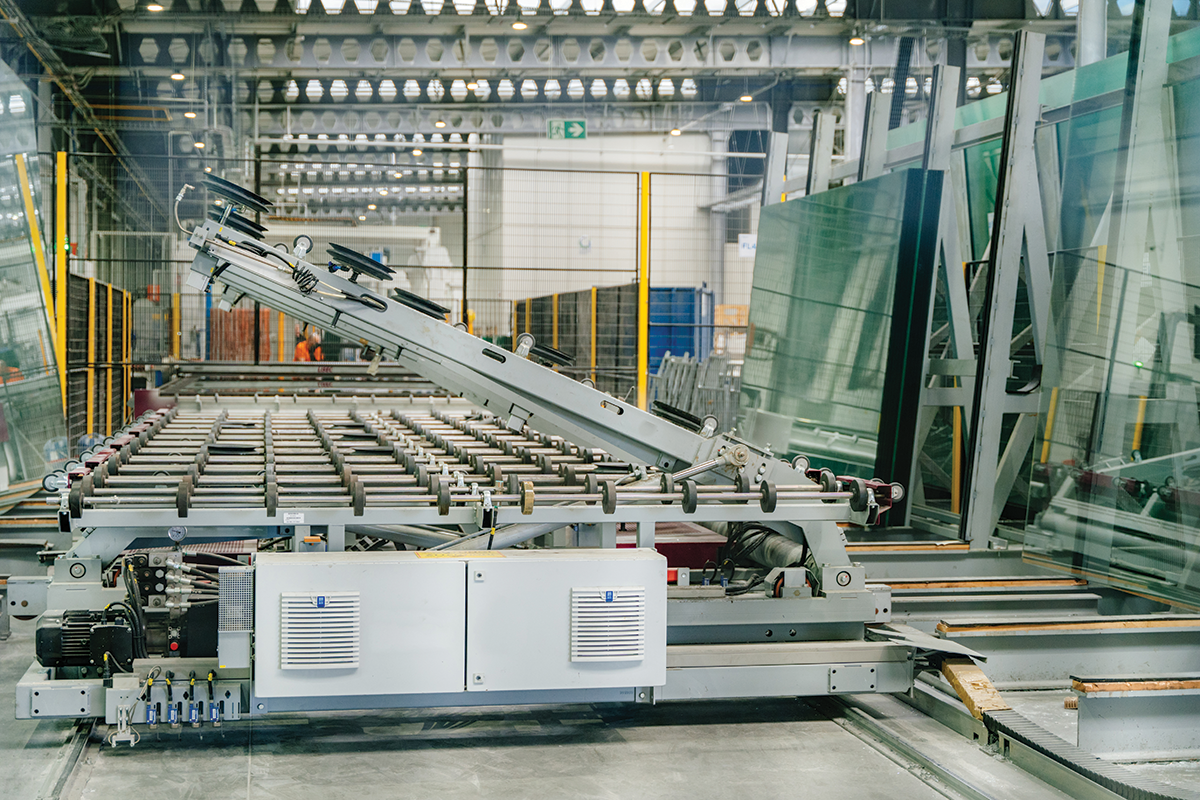Leveraging Available Technologies for Today’s Challenges
Professionals can utilize various new technologies to face increasing demands and challenges in the commercial glass industry

Above: Automated equipment is one of the more effective solutions to the industry’s continued struggle with labor. Photo courtesy of Quanex.
The Bottom Line: Continuous improvement and the strategic use of technology, particularly factory automation solutions, are crucial for commercial glass professionals to meet increasing demands and overcome industry challenges like inflation, labor, logistics and transportation.
Continuous improvement is imperative in the commercial glass industry. Today’s demands continue to grow more stringent, requiring reliable technology to deliver long-term performance in all forms of modern architecture. Simultaneously, commercial glass professionals increasingly require strategic, efficient and effective ways of doing business to continue to succeed.
All this was evident as I read Glass Magazine’s 2024 Top Glass Fabricators Report earlier this year, which outlined some of the biggest challenges and opportunities faced by today’s professionals. Inflation, labor, logistics and transportation continue to be sore points throughout the industry.
The tools to succeed exist; it’s just a matter of leveraging them. As we set our sights on the second half of 2024, here are some proven strategies that will continue to help forward-thinking commercial glass professionals succeed, no matter the challenges ahead.
Application of automation
The commercial glass and glazing community is no stranger to automation in 2024, and I believe in automated technology’s ability to be transformative for operations everywhere.
So I was a bit surprised to read this statistic from the Glass Fabricators Report: “Further automation, and plans to automate, are down year-over-year. While 65% of respondents last year said they automated manufacturing processes, only 53% of this year’s respondents report having automated processes in 2023. While 66% of last year’s respondents planned to automate, 56% of this year’s respondents say they plan to do so in the coming year.”
For fabricators grappling with the impacts of higher interest rates and inflation, major capital investment taking a bit of a dip makes some sense. But I think it’s important we don’t lose sight of the value that automation can bring to a commercial glass shop.
An automated insulating glass line, for example, can be invaluable, helping to maximize quality consistency with precise spacer application while minimizing the labor required. This is especially true if you’re working with high-quality, warm-edge spacer systems that can dramatically enhance the thermal performance of your IG units. Given our industry’s continued struggle with labor, automated equipment is one of the more effective solutions to that problem that is currently available. While an automated line may have once only been justified by high-volume production, the benefits in terms of quality, consistency and labor savings should all be a part of the calculation in today’s marketplace.
Harnessing available technology
Technological advancements extend to product offerings as well. Window and glass systems contribute significantly to a building’s efficiency. For commercial professionals, it’s worth exploring the available technology to meet today’s demands. Commercial-grade vinyl window systems represent one of those technologies.
For decades, metallic systems have been the systems of choice in commercial glass and glazing applications for their structural strength. But metal transfers heat, leading to a huge energy loss, which could become a bigger concern as the code crunch inevitably continues. There have been advancements—thermal break (strut or pour-and-debridge) technologies to isolate the conditioned space from the outside environment—but these basic strategies aren’t overly complex. As thermal performance targets get more stringent and fabricators struggle with labor, these simple thermal break designs can become increasingly complex and costly.
Recent breakthroughs in domestically produced vinyl framing technology can provide the thermal efficiency and structural integrity required in various commercial applications.
The commercial glass and glazing industry continues to push forward, no matter the challenges that present themselves. The good news is that glass professionals have the right tools and technologies at their disposal—sometimes, it’s just a matter of putting them to work.


